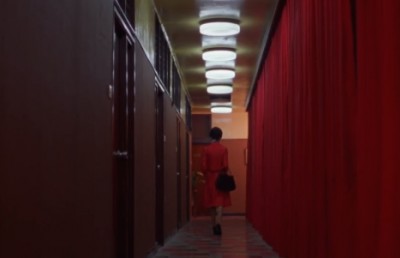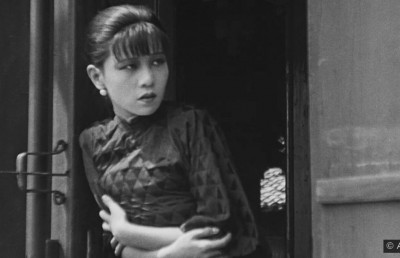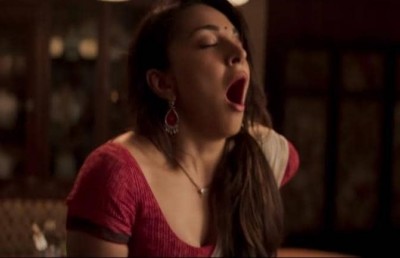Gojira (Ishirō Honda, 1954), Godzilla, King of the Monsters! (Ishirō Honda & Terry O. Morse, 1956)
Godzilla,_King_of_the_Monsters_(1956)_1000_420_90_c1.jpg)
‘Bombs versus bombs. Missiles versus missiles. And now a new superweapon to throw upon us all. As a scientist, no, as a human being, I cannot allow that to happen.’
—the tortured scientist Dr. Serizawa (Akihiko Hirata), creator of the secret Oxygen Destroyer, reluctant to use it, even if it’s Japan’s only hope against the marauding Godzilla, from Gojira
‘We knew the world would not be the same. A few people laughed, a few cried. Most people were silent. I remembered the line from the Hindu scripture ‘Now I am become Death, the destroyer of worlds.’ I suppose we all thought that, one way or another.’
—J. Robert Oppenheimer, one of the ‘fathers of the atomic bomb’ reflecting back on the success of the very first nuclear weapon test, less than just one month before his new babies were dropped on the Japanese cities of Hiroshima and Nagasaki, killing around 200,000 civilians and changing the world forever
An entire city aflame. Horrified civilians running for their lives before a sudden unimaginable onslaught; while in powerful counterpoint, in the middle of this living hell, a mother quietly clutches her two children to her as the figure of death looms, soothing them with the thought that they will all be joining their father soon (with him perhaps having been a victim of the war?). The next day, a decimated Tokyo, raised to the ground as far as the eye can see. Hospital wards filled with the suffering, the camera lingering on the bandaged faces of traumatized children. A doctor responding with a grim shake of his head, the shrill sounds of a Geiger counter revealing a newly orphaned child doomed with deadly radiation that the night’s attack brought, while on the television a strikingly composed girls choir sings a profoundly moving ode to peace – an unforgettably moving piece that will be reprised for the concluding scenes, in which the end to the immediate threat might be assured, but little comfort exists for the future of mankind itself. And there isn’t the expected finale of celebration for the vanquishers, but something much more haunting and reflective; an overriding sense of mourning, not just for the death and destruction that has come and will need to be re-built upon, but for the monstrous potential man has for self-destruction, freed from its Pandora’s box.
Godzilla,_King_of_the_Monsters_(1956)_500_375_90.jpg)
Dark moments of pain and tragedy
Experiencing it after at least a decade passing (this time with daughter and ex in tow), on my huge projection screen (which had me briefly proudly pondering how much my wall screen is larger than those little matchbook ones they got at New York’s Film Forum, where I previously saw it… and concluding it’s not even close… time to step up your game over there, Film Forum! If you survive the pandemania that is… ), what impacted me most (or perhaps what I was reminded of most) was, while Gojira certainly willingly embraces its status as a giant-monster-on-a-rampage movie (my daughter asked, somewhat incredulously, upon seeing the monster’s full arrival from the sea for the first time, ‘Is that a guy in a suit?’), what a deeply moving elegy the film is to the unbelievably devastating day the US bombs were dropped, and to the physical and emotional ruin left lingering long after (reflected literally in the ruined eye of Dr. Serizawa, explained as a war wound)… as well as a cautionary reflection on man’s greedy, imperialist search for stronger and stronger weapons with which to take control.
Godzilla,_King_of_the_Monsters_(1956)_534_399_90.jpg)
I guess it shouldn’t come as a surprise that, during the first decade after the dropping of those double A bombs, where the perpetrators of the crimes itself, Uncle Sam’s US of A was making its own big bug movies touching upon the ‘fear of the atom bomb’ (with the giant killer ants created from nuclear testing attacking New Mexico from 1954’s screamingly-titled Them! perhaps being the best and most mature of that lot), that it would be a Japanese effort – where the unimaginable actually happened, rather than just seeing it as some kind of unimaginable ‘nightmare’ as the Americans were – to truly reach down into the levels of the profound with its radiation monster movie.
Awakened from his slumber on the ocean floor presumably from nearby nuclear bomb testing (though this connection is much less explicit in the radically re-edited and much-less politically-minded 1956 American cut of the film, where he was introduced to most of us wide-eyed monster movie-lovin’ Western-worlders as Godzilla, which is as great a creature name as ever created, and I’d argue is as much a reason for his radiation-spewing infiltration into our Western world collective psyches as any other – oh, along with that unforgettably relentless and magnificent orchestral score, which ended up – in always welcome fashion – recycled again and again for any number of the ongoing potpourri of the big green guy’s continuing monster battles to follow), the first half of Gojira is told in quasi-documentary, newsreel style, with little attachments to main characters (extremely well-crafted, by the way, with the multitude of scenes – from the large canvas of the public reaction, the Gojira night time attacks on ships out at sea and the various government officials responding — all vibrantly captured), which adds to the sense of verisimilitude and seriousness. Even in its second half, where a number of characters and their human drama begins to emerge, the film never relinquishes its hold, as the romantic triangle defies the genre odds and actually works, ultimately adding additional pathos to the tragic fate of the Serizawa character.
Godzilla,_King_of_the_Monsters_(1956)__630_458_90.jpeg)
The ‘scarred’ Dr. Serizawa
Constant images float to mind now with Gojira. The desperate young boy, covered in rain and mud, shrieking in pure grief, unable to prevent the death of his elder brother, ironically the only survivor of the first Japanese freighter destroyed out at sea by Gojira just a few nights before, now taken by the returned monster, a reminder that any escape from the horrors is merely temporary (like the victims of the war, and the A bombs, where initial survival still meant either emotional trauma, or often slow death within months from the radiation exposure), with the camera lingering on the boy’s anguished cries longer than most films of this ilk normally would. There’s the stoic and dignified demeanor of the great Takashi Shimura, a key acting cog to many a Kurosawa classic, as paleontologist Dr. Yamane, who dutifully does his job while filled with a deep sorrow, seeing the prehistoric Gojira as a unique opportunity to study rather than destroy.
Allowing a country to cathartically process and lingeringly look again at something horrible they’ve gone through and that is stuck in their psyches like an open wound (In fact, my only question would have been, with the war having ended a mere decade before, if it wasn’t too soon… though the box office results clearly said otherwise), but from the considerable safety of a ‘monster movie’ (it’s not the literal re-telling of the night the atomic bombs obliterated their cities – or, for that matter, when US carpet bombs rained down on their cities and civilians, such as Tokyo, where 100,000 civilians were burned to death in a single night – but a big green monster, i.e., a guy in a very cool looking rubber suit), Gojira is as pure an example of the nobility that the Genre Movie can achieve in its highest form. I don’t think it’s a coincidence that, the further they moved away in time from the war and its terrible devastation, the lighter, goofier and more-audience friendly the continued rubber monster kaiju mash-ups that predominated for the decades to follow would become (I mean, I’d say the original Gojira is for kaiju films that followed into the 60’s and 70’s what Come and See is to war films… there’s just no comparison).
Godzilla,_King_of_the_Monsters_(1956)_630_481.png)
Raymond Burr
‘This is Tokyo. Once a city of six million people. What has happened here was caused by a force which up until a few days ago was entirely beyond the scope of Man’s imagination. Tokyo, a smoldering memorial to the unknown which at this very moment still prevails and could at any time lash out with its terrible destruction anywhere else in the world. There were once many people here who could’ve told of what they saw… now there are only a few. My name is Steve Martin. I’m a foreign correspondent for United World News. I was headed for assignment in Cairo, when I stopped off in Tokyo for a social call, but it turned out to be a visit to the living hell of another world.’
—Steve Martin (Raymond Burr), Godzilla, King of the Monsters!
‘Then you have a responsibility no man has ever faced. You have your fear which might become reality. And you have Godzilla, which is reality.’
—simple ship’s captain Ogata (Akira Takarada), describing the terrible dilemma of the brilliant scientist Dr. Serizawa… even as he tries to talk him into using his super-weapon, Godzilla, King of the Monsters!
And then came the American cut of the film, in which (thankfully for us Westerners) some entrepreneurial distributor caught a market screening somewhere, immediately saw the monster’s potential, gobbled up the Gojira rights, did some extensive re-shoots to ‘Americanize’ it (re-arranging the chronological narrative onto a more Hollywood-style noir-like template, with all of that genre’s familiar temporal shifting, starting the film with Burr’s Martin already in the hospital after Godzilla’s initial attack, and then presenting much of the rest of the running time in flashback with Martin narrating) and released it to great success (as well as managing to inject it directly into the societal zeitgeist) in 1956 as Godzilla, King of the Monsters! (which was how I have known the monster for most of my life, introduced on television at the pinnacle of my most impressionable childhood years, and smitten with ever since, including years past it being ‘cool’ to admit – and, since I’m in full geek disclosure mode here, I’ll say I’ve always had a thing for that particular go-to double-toned roar he emits, right from this first outing, thankfully kept for the American cut, now as familiar and present a part of the big green guy as those wonderful, oft-wobbling, rubbery Stegosaurus-like dorsal plates running down his back, and constantly recycled in any number of strange places, such as the roar used for the killer Le-matya on Vulcan in Star Trek: The Animated Series, which I’m always tickled to come across even now).
_to_the_world_of_the_monster_Gojira_-_Gojira_(1954)Godzilla,_King_of_t_630_457.png)
Somehow it wasn’t until years into adulthood before I even considered the existence of an original Japanese version; as obvious as it was, it somehow escaped my consideration (weird, as I humbly submit, I was a pretty thoughtful kid – perhaps it just reflects the magical hold the film as it was had on me all those years), let alone that – eegads! — Raymond Burr’s intrepid American foreign correspondent Steve Martin, wasn’t even a character in it! On top of it, watching the ‘fun cut’ again with my incredulous daughter, just after watching the brilliant whole of the original Japanese version, neither of us could imagine how I could not have spent most of the film chuckling a bit (as we were doing now) at the admittedly clumsy attempts at including Burr’s Martin (with a few LA-based Asian actors joining him in frame to up the attempted reality) in almost every scene, having him coincidentally friends with just about every character in the narrative (and occasionally ‘stopping’ each for a conversation shot over-the-shoulder, in clearly entirely different locations with an obviously different actor standing in for the Japanese originals).
Godzilla,_King_of_the_Monsters_(1956)_630_387_90.jpg)
The final heroism and tragedy of Dr. Serizawa
Saying all that, however, I would argue that while Godzilla is a nowhere near the brilliant art film that Gojira is, it is more than worthy of respect. And while some of that may be partially due to some residue of nostalgia (okay, maybe a bit more than that), but – put my own feelings aside for the moment – can you really argue with the hold that original film had, and still has, over the American consciousness?
As awkward as it is, there’s something admirably clever, and most enjoyable, in how hard the filmmakers worked to drop Burr into the narrative. And Burr himself, while given little to work with on a character level, comes at his role — as the identification point for the American audience — with genuine conviction; while I would learn later (upon finally catching up with Gojira) that the monster’s attacks on Tokyo actually work even more evocatively shown cinematically with mostly silence and no voiceover, with the score occasionally chiming in to add some punch, the near-unceasing monologue in the American version of Martin watching from a window, gravely describing into his dictaphone his eyewitness account of the horrors of the destruction of Godzilla’s attack, reporting even as the monster approaches and destroys the building he’s in, with sweat beading on his face and fear growing in his voice, is quite potently delivered by Burr… and is another memorable element I’d argue that helped make the re-cut film have such an impact on American audiences.
Godzilla,_King_of_the_Monsters_(1956)_600_338_90.jpg)
The effects of the Oxygen Destroyer
A criticism of the American cut is the supposed excising of much of the direct link of the creation of Godzilla with America’s nuclear bomb testing (and corresponding horrifying use of those bombs), with the underlying implication that the American distributors were perhaps deliberately ‘softening’ for their audience any uncomfortable message that would hold their Western audience as the underlying culprit for the creation of the monster. I’d argue that – while the explicit connection between Godzilla’s rise and the nuclear testing has been cut (likely for wanting to just stay away from overt political allegory) – things like the moral struggles of Serizawa, as a kind of Oppenheimer literal monster-maker, are still clearly there (as reflected in the beautiful dialogue said by Ogata above). The profound levels of destruction, the pain-filled hospitals, the beautiful girls choir singing out their painful plea over a destroyed city… the sense of sorrow can’t help but bleed over from the Japanese version’s scenes. And while much of the additional American dialogue is perfunctory, a look at the quotes above reveal that the American writers did manage some genuine poetry now and then.
It was with Godzilla, that “King of the Monsters”, that my youthful imagination was initially captured (and how was it I only recently noticed just how much he looks like a crocodile?), but it was with his much later arrival to our American shores, renamed (or, more accurately, returned to his initial state) as Gojira that I finally realized the true profound maturity of his original conception. Like a representations of the process of growing up, Godzilla became Gojira… with both incarnations holding a piece of my heart.














